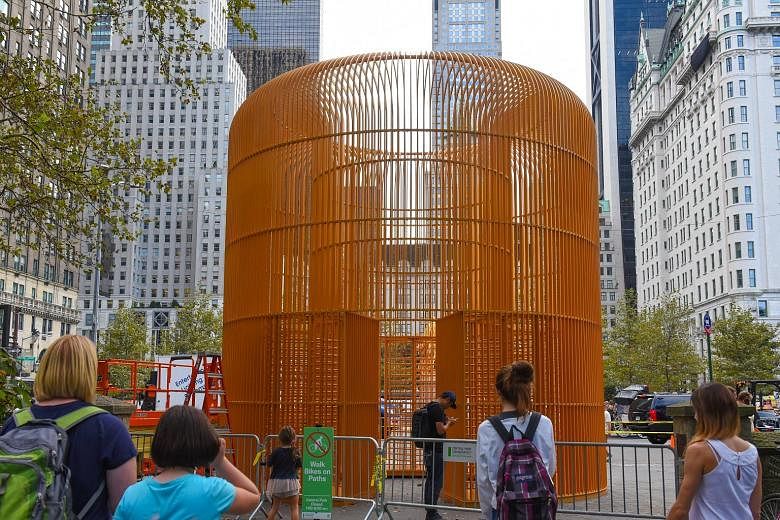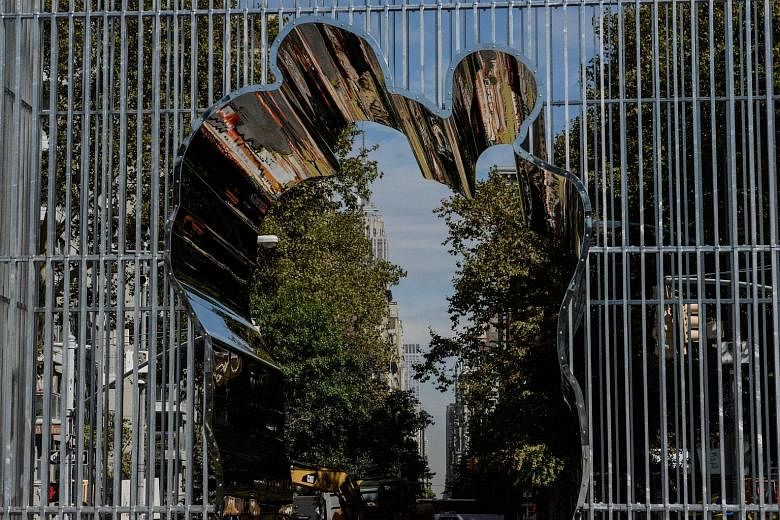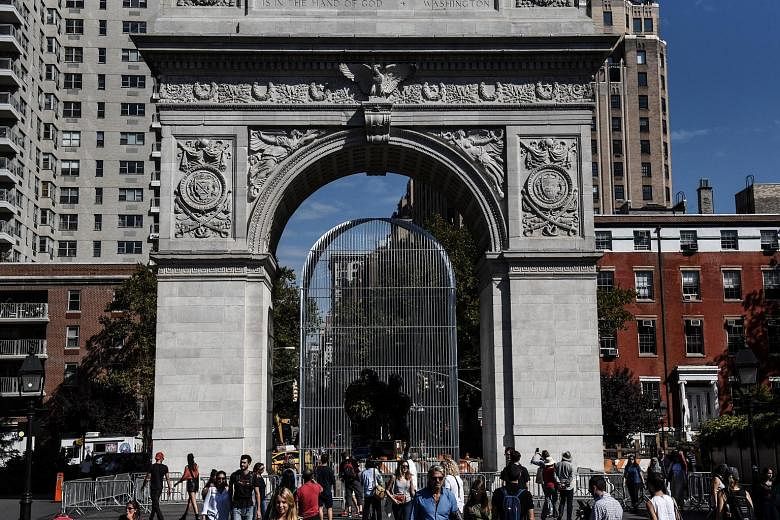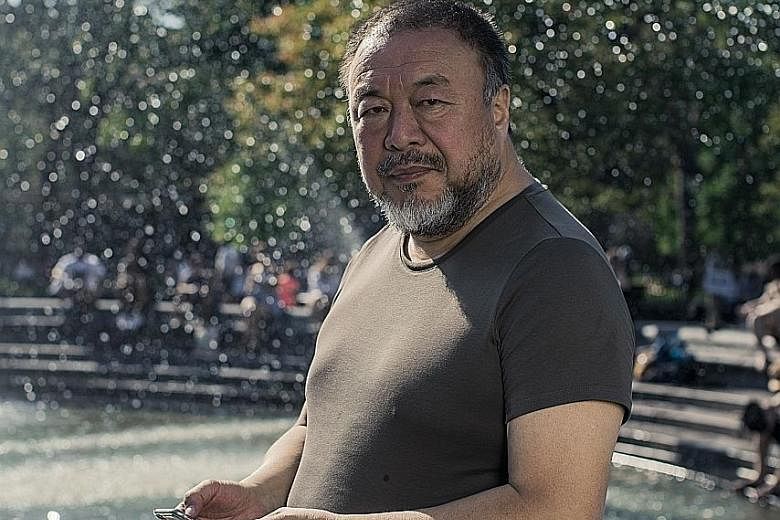NEW YORK • Ai Weiwei is many things - a restless artist in all media, China's most prominent dissident and a compulsive Instagrammer - but he is a New Yorker too.
He lived here for a decade back in the 1980s and early 1990s. You can tell by the way he casually jaywalks through Greenwich Village without needing to really look at the traffic.
"I'm in love with this city," he said as he ambled down Thompson Street recently, stopping at a store with chess pieces in its window and musing on the chess obsession of his idol, Marcel Duchamp.
Though now Berlin-based, he has been spending time in New York preparing his Public Art Fund project, Ai Weiwei: Good Fences Make Good Neighbours, the most extensive installation that organisation has ever mounted. It debuts on Thursday with more than 300 artworks throughout five boroughs, anchored by three large sculptures, in Central Park, Washington Square Park in Greenwich Village and Flushing Meadows-Corona Park in Queens.
In a nod to Duchamp, Ai said, the project uses "the city as a ready-made". The installations are part of his effort to draw attention to the international refugee crisis, the subject of his new documentary, Human Flow, which opens in New York and Washington, DC, on Friday and represents 11/2 years' of work, during which he travelled to a dozen countries.
He is something of a refugee himself: He was stripped of his passport and detained in China by the Chinese government for more than four years, from 2011 to 2015.
Some 65 million people around the world, he says, have been forced from their homes by conflict and persecution - the greatest displacement since World War II. "This is not just a regional crisis," he added. "It's global, it's historical. The numbers will get bigger."
He is also giving public talks across the city on the topic.
"This is an unusual confluence of Weiwei in one city," said Ms Alexandra Munroe, the curator who organised the Guggenheim Museum's show Art And China After 1989: Theatre Of The World, which opened last Friday.
Ai initiated and curated a film series with his Berlin-based partner, Wang Fen, Turn It On: China On Film, 2000-2017, to accompany the museum exhibition.
Good Fences spreads across the city with several smaller elements, including fence-like sculptures that double as seating at bus stops. Lamp-post banners will display images of refugees from Human Flow as well as famous people who were displaced, such as Sigmund Freud.
Five medium-size installations in the East Village and Lower East Side refer to the neighbourhoods' immigrant history.
Underneath the marble Washington Square Arch and at the Doris C. Freedman Plaza at Central Park's south-east corner, he is erecting two large, cage-like structures.
One of them, Arch, is silver and shaped like a birdcage; and the other, Gilded Cage, has a series of turnstiles - a nod to the physical barriers refugees encounter - in a circular structure. Its gold tone recalls nearby Trump Tower and its presidential namesake, he said.
Arch, through which visitors can walk and see themselves reflected in the metal, came under fire in August from a community group, the Washington Square Association, for being too invasive - the traditional holiday tree under the arch will have to be scrapped - and for being planned without enough notice for residents.
But with the approvals of the local community board and city agencies, it went forward. The New York City Department of Parks and Recreation stipulated building a free-standing structure that does not touch the Arch, and Ai complied.
He seemed aware that as a noted dissident, welcoming dissent about his own project was part of his role. "It's fantastic," he said of the objections. "The work challenges the issue of tolerance, co-existence."
But he added: "This is artwork for the city, not just the neighbourhood, and it has strong support from all kinds of communities and people."
He has shown a knack for translating his ideas into conceptual projects that fit the prevailing language of international contemporary art - formalised and intellectual.
Human Flow, however, shows a more personal side, with Ai directing the film, but also appearing occasionally to empathise with refugees living in horrific camps.
Forced displacement resonates with him. The poetic title, Good Fences Make Good Neighbours, takes its title from Robert Frost, but Ai's father, Ai Qing, who died in 1996, "was the most well-known poet in China", he pointed out.
His father was a friend and favourite of Mao Zedong who, in the purge of intellectuals, was sent to a labour camp and then banished to the provinces in 1958.
His own four-year hardship detention involved "conditions much worse than jail", he recounted, referring to a military police base where he was held for part of that time.
He said the most painful aspect was the separation from his son, Ai Lao, now eight, whose mother is Wang, his Guggenheim film series co-curator. He is separated from his wife, Lu Qing, who lives in China.
"They said, 'When you're released, he will never recognise you,'" Ai recalled of his captor's threats of a decade-long imprisonment. "Now I try to spend as much time as possible with him." That includes, when he is in Berlin, dropping his son off at school and picking him up.
NYTIMES




